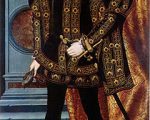
On this day in 1543, the Treaties of Greenwich were signed. In these treaties between England and Scotland, it was agreed that Prince Edward, the future Edward VI, would marry Mary, Queen of Scots.
[Read More...]
On this day in 1543, the Treaties of Greenwich were signed. In these treaties between England and Scotland, it was agreed that Prince Edward, the future Edward VI, would marry Mary, Queen of Scots.
[Read More...]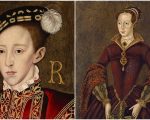
On 21st June 1553, letters patent were issued stating that King Edward VI’s heir was Lady Jane Grey, eldest daughter of the king’s cousin, Frances Brandon, Duchess of Suffolk.
Edward VI was dying, having been ill for a few months, and in the original draft of his “Devise for the Succession” he stipulated that the Crown would descend through the male heirs of Frances, Duchess of Suffolk, if Edward died childless. The problem was that there were no male heirs yet, so when Edward made a turn for the worse he decided to change the document to read: “To the Lady Fraunceses heirs males, if she have any such issue before my death to the Lady Jane and her heirs males.”
[Read More...]
The four weeks of Advent began on Advent Sunday, the fourth Sunday before the Nativity, and was a time of fasting, i.e. abstaining from meat. Christmas Eve was even stricter than the rest of advent, with no meat, cheese or eggs being eaten, until after midnight mass when it was officially Christmas Day.
[Read More...]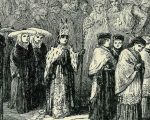
The 6th December was and is the feast of St Nicholas, or St Nicholas of Myra, the 4th century Bishop of Myra (modern-day Demre in Turkey), who is the patron saint of children, as well as sailors, merchants, archers, repentant thieves, brewers, pawnbrokers and students. In medieval and Tudor times, it was traditional for a choirboy to be chosen on 6th December or Childermas (Holy Innocents’ Day) as “Boy Bishop” to act as bishop and to lead processions around communities, collecting money for the church and parish funds, and to lead some religious services.
[Read More...]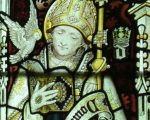
1st March is the feast day of St David (Dewi Sant), patron saint of Wales. According to Rhigyfarch’s Life of Saint David, David lived in the 6th century and founded religious centres including Glastonbury and Croyland. He then travelled to the Holy Land and was made archbishop at Jerusalem before travelling back to Wales and settling at Glyn Rhosyn (Rose Vale), or St David’s, in Pembrokeshire, Wales. There, he founded a monastery whose site is now marked by St David’s Cathedral.
[Read More...]
I’ve mentioned Postscript Books before in videos, but I thought I’d write a post just highlighting them as a great resource for bargain history books. Thank you to Tudor Life contributor Olga Hughes for recommending them to me, what a find!
Postscript Books are a mailorder bookseller based in Devon, in the UK, and who offer books at up to 75% off publishers’ prices. They can offer these discounts because the books are publishers’ overstocks or remainders. By the way, I’m not affiliated to them in any way, I’m just a happy customer!
[Read More...]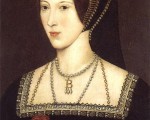
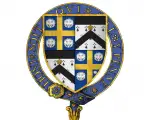
On 2 May 1536, Anne Boleyn was ordered to present herself to the Privy Council. Standing before the Duke of Norfolk, Sir William Fitzwilliam and Sir William Paulet, Anne Boleyn was arrested for committing adultery with three men: Mark Smeaton, Henry Norris and an unnamed man.
After lunch, Anne was escorted from Greenwich to the Tower of London. Popular myth tells of how Anne entered the Tower of London from the Thames through ‘Traitors Gate’. However, researchers and historians suggest that she would have arrived through the Court Gate near the Byward Tower – which was the common entrance for people of nobility and royalty. Here she was met by Sir Edmund Walsingham, the Lieutenant of the Tower, and escorted inside.
[Read More...]
Yay! I’m so excited! On 24th September eighteen of MadeGlobal Publishing’s authors will be in London for “an evening with the authors”. This is your chance to mingle with 18 Tudor history authors (many of whom are Tudor Society contributors), have your photo taken with them by a professional photographer, get their autographs, discuss your book idea with MadeGlobal Publishing, and fire questions at the authors in a Q&A session.
[Read More...]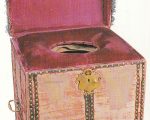
The Groom of the Stool, or, as the official title was known, The Groom of the King’s Close Stool, has gone down in history as one of the grossest jobs available. As the name suggests the Groom of the Stool was responsible for attending to the King’s toileting needs. The Groom would care for the King’s toilet, known in the Tudor period as a ‘Stool’. He would be responsible for supplying water, towels and a washbowl for the King when he had finished his business. There is some debate as to whether or not the Groom of the Stool was responsible for wiping the King’s behind, with some believing he did and others thinking his duties did not extend to that extreme.
While being responsible for the King’s bodily functions may seem quite disgusting for us in today’s times when going to the bathroom is considered to be a private matter, it was very, very different in the Tudor age.

Regular contributor, Tudor Society member and historian Derek Wilson has just informed me that an article he has written on Richard III is the lead feature article in the very first issue of “History of Royals” magazine which comes out on 14 April.
[Read More...]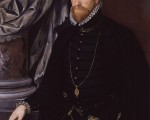

I’ve just seen the news on Facebook that historian and author David Baldwin passed away on Monday (4th April). It is such sad news.
[Read More...]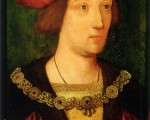
On 2nd April 1502, Arthur Tudor, eldest son of King Henry VII, died at Ludlow Castle. He was just fifteen years old and had been married for less than five months.
Arthur Tudor had married Katherine of Aragon, daughter of King Ferdinand II of Aragon and Queen Isabella I of Castile. King Henry VII had worked hard for several years to secure a marriage between his son and Princess Katherine to see a strong alliance created between England and Spain. The marriage would also help to put England on the international stage and secure the succession of the Tudors.
[Read More...]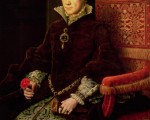
On 30th March 1558, Queen Mary I made her last will and testament, believing that she would soon give birth and knowing that childbirth was a risky process.
[Read More...]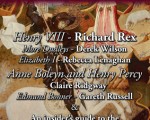
Packed with a wide range of articles about Tudor personalities like the Dudleys, Elizabeth of York, Mary I, Isabella of Spain and Henry Howard. There is part one of an insider’s guide to the Tower of London, a detailed article about Greenwich Palace and Wroxhall Abbey, an article about some bizarre Tudor foods and lots more! It’s our best magazine yet!
[Read More...]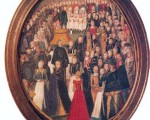
Maundy Thursday commemorates the Last Supper, that final meal that Jesus Christ had with his disciples before his arrest.
In Tudor times, on Maundy Thursday, the church was prepared for Easter with water and wine being used to wash the altars and it was traditional for people to go to confession. The three holy oils – the chrism oil, the oil of catechumens and the oil of the sick – were also blessed on this day.
At the Last Supper, which was the Passover meal, Luke’s Gospel says that Christ took bread, gave thanks to God for it, broke it and then shared it with his disciples, saying “This is my body given for you; do this in remembrance of me.” He then took the cup of wine, saying, “This cup is the new covenant in my blood, which is poured out for you.” Christians all over the world remember this gesture by celebrating the Eucharist, also known as “communion”. According to John’s Gospel, it was at this meal that Jesus washed his disciples’ feet, and both Luke and John record Jesus saying that there was one among them who would betray him.
[Read More...]